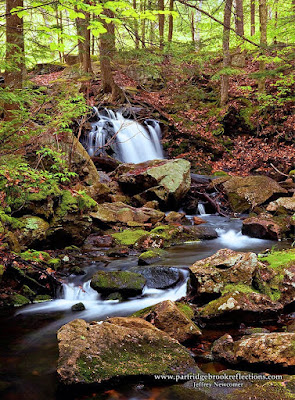 |
| Through the Trees, Warwick Ma. |
 |
Snow can Screen, Chesterfield NH
|
Stuff Gets in the Way!
 |
| Spire Screen, Keene NH |
Photoshop’s Disappearing Acts
 Spofford Village, NH |
About
five years ago, I published an article reviewing the various ways that distractions
can be removed using Photoshop. Specifically, I was trying to remove a
branch from in front of a church in Spofford New Hampshire. I used simple
cloning and patching to erase the branch and Puppet Warping to move it to the
side. Sadly, at that time, Smart Fill was not yet available. All of these
techniques can be challenging and time-consuming, but I always love the process
of removing distracting stuff.
 |
| Puppet Warped Branch |
 |
| Steeple Cleared - Much Work |
In
this case, as I stepped back from the removal process, I discovered that I
actually preferred the original image, branch and all. Over time I have
become more aware of how some natural screening elements can enhance the
interest of compositions.
The Glory of Tangles
I
reviewed my archive of favorite images and found many in which the screening
elements seemed to add to the image’s attraction and I tried to understand the
situations in which a little screening was not so bad.
I
found a few broad categories of images in which there seemed to be value in
looking through foreground “stuff”. Of
course, I am talking to photographers here, and you will inevitably have your
own tastes and preferences, but perhaps this exercise will encourage reflection
on the when screening is ok.
My
Categories
Contribution of the Foreground to the Story
 |
| Weathersfield Barn, Vermont |
It
is obvious the tangle of brambles in front of the dilapidated barn in
Weathersfield Vermont is essential to the focus of the image. The same is
true of the ice coated bushes screening the barn in Marlborough New Hampshire,
taken in the aftermath of the disastrous ice storm of 2008.
 |
| 2008 Ice Storm, Marlborough NH |
 |
| Westmoreland NH |
The
line of trees with classic sap gathering buckets screens the barn, but, in all
these images, the screenings do not distract, they add an essential aspect to
the story of the images.
Contrast with the Background
 |
| Stickney Brook Falls |
For
me, the foreground screens are most effective when they contrast with the
background. I see this most frequently when I place sharp features in
front of the soft flowing water, whether it is cascading brooks or waterfalls.
 |
| Beaver Falls, Colebrook NH |
 |
| Spofford NH |
Contrast may also include differences in color or tone, such as the
brilliant foliage in front of the dark house or the snow covered branches
contrasting with the rich red building
 |
| Roads End Farm, Chesterfield NH |
 |
| To Mt. Monadnock, Jaffrey NH |
I also found images in which the
contrast was primarily between near and far, with distant grand landscapes.
 |
| Distant View, Newfane Vermont |
Framing
 |
| Northfield Pasture |
Foreground elements can also partially frame and highlight a
key portion of the more distant subject.
The sunlit trees in the picture of a Northfield Massachusetts pasture
break only slightly to reveal a distant horse, gazing in the October light, and
the three trees on a hillside in Pomfret Vermont nicely draw the eye to the
distant barn.
 |
| Pomfret Vermont |
Practical Considerations and Sheer Laziness
There
are many times when it is not possible to frame a composition without including
screening stuff, but I often try my best to crawl into some awkward locations,
which are usually wet or dangerous, to get around the obstructions. Even
when that is possible it often means accepting a suboptimal composition.
 |
| Perkins Pond Falls, Troy NH |
I like the image of the Perkins Pond Falls in Troy New Hampshire, looking down
from the edge of the steep bank and screened by trees. On another occasion I
found a spot down-stream, from which I could descend to the level of the brook,
but it required considerable effort to work my way up to the level of the
falls. A pretty picture and without obstruction but I think I prefer the
shot from the bank, including the lovely trees. And, of course, it was also much
easier to shoot.
 |
| Perkins Pond Falls - Brook Level |
As always, the final decision about composing with screening elements comes down to personal taste. Although my nature is generally to avoid distractions, the benefits of a little contrast is often worth considering.
Jeffrey
Newcomer



No comments:
Post a Comment